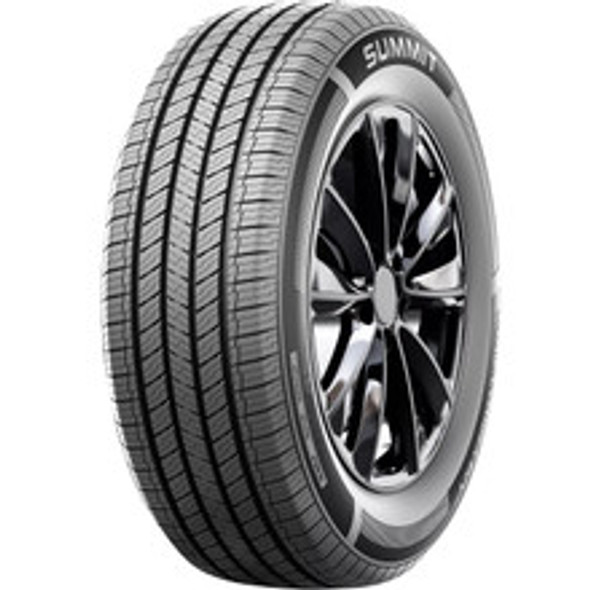Best Tires for All Seasons: Compare All-Season, Winter, and Summer
Your tires do more than roll you from point A to point B. They’re your first line of defense in bad weather, your grip in high-speed corners, and your partner on every road trip. Choosing the right tires for the season isn’t just about preference it’s about safety, performance, and cost over time.
So, what’s the real difference between all-season, winter, and summer tires? Which one should you trust beneath your car, and when? Let’s dig into the details and help you make the right decision for your climate and driving style.
Understanding Seasonal Tires
Why Tire Choice Matters More Than You Think
The type of tire you choose affects more than just traction. It impacts your fuel efficiency, how well your car brakes, how it handles in curves, and even how loud it sounds on the road. Using the wrong tires in the wrong season can shorten their lifespan and reduce your control in critical moments.
What Defines an All-Season Tire
All-season tires are designed to offer a balanced performance in a variety of conditions — dry roads, rain, and light snow. They’re made from a medium rubber compound that stays flexible in mild cold but doesn’t get too soft in heat. Their tread patterns are designed to evacuate water and offer a quiet, comfortable ride. Most vehicles come factory-equipped with them because they strike a practical balance between year-round usability and affordability.
How Winter Tires Are Engineered for Snow and Ice
Winter tires, often called snow tires, are built from softer rubber compounds that stay flexible in freezing temperatures. They feature deep treads with extra biting edges and sipes that grip snow and ice. Some even allow for studs. They’re essential if you drive in temperatures consistently below 45°F or navigate snowy, icy roads. The improved braking performance alone is a lifesaver.
Summer Tires: Built for Speed and Grip
If you crave precision, performance, and road feedback, summer tires are your match. Made with specialized compounds and aggressive tread patterns, they provide maximum traction on dry and wet roads in warm weather. However, they become stiff and ineffective in cold weather and should not be used below 45°F.
Seasonal Tire Breakdown: Pros, Cons, and Best Use Cases
The Pros and Cons of All-Season Tires
Pros: Convenience, cost-effective, no need to change tires every season, decent performance in most mild climates.
Cons: Jack of all trades, master of none. They lose effectiveness in heavy snow or extreme summer heat. If you live where winters are harsh or summers are scorching, you’ll notice the limitations.
When and Where Winter Tires Make the Most Sense
If you experience snowy winters or freezing rain, winter tires are non-negotiable. They provide shorter stopping distances, improved control, and better acceleration in cold conditions. Some states and provinces even mandate them in winter. They’re best for drivers in northern climates or mountainous regions.
Why Summer Tires Dominate in Warm Weather
From sports cars to luxury sedans, summer tires deliver peak performance. They grip corners, resist hydroplaning in summer rain, and give a more connected road feel. Perfect for drivers in hot, dry, or temperate areas who prioritize performance and drive excitement.
Tire Swaps and Storage Tips for Seasonal Sets
If you use both summer and winter tires, make sure to store the off-season set properly. Keep them in a cool, dry place, ideally off the ground and out of direct sunlight. Rotate them at least once per year and check for uneven wear before reinstalling.
Real-World Advice for Drivers
Choosing Tires Based on Where You Live
Your zip code matters. If you're in the Midwest or Northeast, winter tires are likely a smart seasonal investment. Live in Florida or Southern California? Summer or all-season tires are better suited. In-between climates might call for all-season tires or even all-weather tires, a newer hybrid category that bridges some performance gaps.
Budgeting for Tire Changes Without Regret
Switching tires seasonally sounds expensive, but here’s the kicker — by splitting use between two sets, each lasts longer. That spreads out cost over time. Plus, if it prevents one accident or improves braking by just a few feet in an emergency, it’s worth every penny.
Safety Considerations Most Drivers Overlook
Did you know winter tires can stop up to 30 percent shorter on ice than all-season tires? Or that summer tires can reduce braking distance by 10 to 15 feet in wet conditions compared to all-seasons? These aren’t small differences. Your tires are your grip on the world. Choose wisely.
Personal Story: The Year I Switched to Winter Tires
I used to think I didn’t need winter tires. I’d “take it easy” when the roads got slick. That changed the day my car slid through a stop sign at the bottom of an icy hill. No damage, thankfully. But the next day, I bought winter tires. The difference in traction, control, and peace of mind? Night and day.
Final Verdict: What’s Right for You?
Best Overall for Mild Climates: All-Season Tires
If you rarely see snow and temperatures stay above freezing, all-season tires are your best bet. They’ll get you through rainy springs, dry summers, and chilly fall mornings without much fuss.
Best for Safety in Snowy Conditions: Winter Tires
If you face regular snow, ice, or temperatures under 45°F, winter tires are worth the switch. They outperform in traction and braking, keeping you safer when roads get nasty.
Best for Performance Enthusiasts: Summer Tires
If driving is your hobby or your commute involves curvy roads and warm climates, summer tires will give you unmatched road feel, handling, and performance in ideal conditions.
When to Consider a Tire Upgrade
If your tires feel less responsive, show signs of uneven wear, or struggle in seasonal conditions, it’s time to rethink your tire strategy. Don’t wait for a breakdown or a close call. Proactive tire choice saves more than just rubber — it saves lives.

